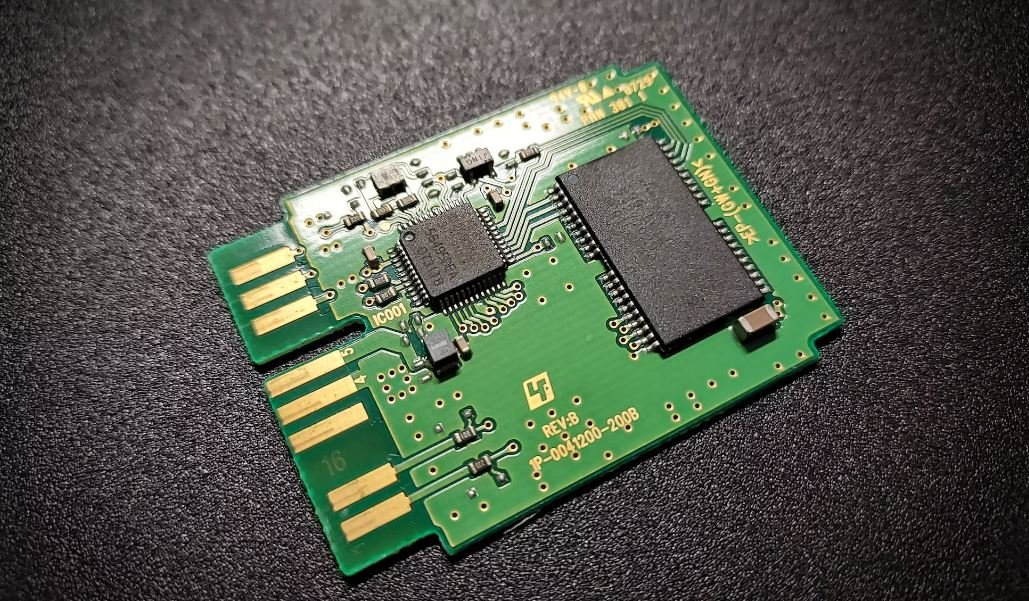Where Artificial Neural Networks Excel
Artificial Neural Networks (ANNs) are a powerful subset of artificial intelligence that mimic the structure and function of the human brain. By using interconnected nodes, or “neurons,” ANNs can learn and process information, making them ideal for a wide range of tasks. In this article, we will explore where ANNs excel and how they are used in various industries.
Key Takeaways
- Artificial Neural Networks (ANNs) simulate the structure and function of the human brain.
- ANNs can learn and process information, making them versatile for a variety of tasks.
- ANNs excel in image and speech recognition, natural language processing, and predictive analytics.
- They are used extensively in industries such as healthcare, finance, and cybersecurity.
Image and Speech Recognition
One area where ANNs shine is image recognition. By training on vast datasets, ANNs can identify and classify objects within images with remarkable accuracy. Companies such as Google and Facebook utilize ANNs to automatically tag and categorize photos uploaded by users. This technology has numerous applications, from self-driving cars to facial recognition systems.
*Interesting fact: ANNs can recognize objects in images even when they are partially obscured or viewed from different angles.
Similarly, ANNs are extensively used in speech recognition systems. By analyzing patterns in audio data, ANNs can convert spoken language into written text. This technology powers virtual assistants like Siri and Alexa, enabling users to interact with their devices through voice commands. ANNs can also improve accuracy over time by continuously learning and adapting to user speech patterns.
*Interesting fact: ANNs can differentiate between different accents and speech impairments, making speech recognition more inclusive and accessible.
Natural Language Processing
Natural Language Processing (NLP) is another field where ANNs play a crucial role. NLP focuses on the interaction between computers and human language, enabling machines to understand, interpret, and respond to human language. ANNs are used in tasks like sentiment analysis, language translation, and chatbot development.
*Interesting fact: ANNs can even generate natural language text, making them valuable for content generation and text summarization.
Predictive Analytics
With their ability to learn from past data and recognize complex patterns, ANNs are highly effective in predictive analytics. By analyzing historical data, ANNs can identify trends, make predictions, and generate insights for businesses. This technology is utilized in areas such as financial forecasting, customer behavior analysis, and demand prediction.
*Interesting fact: ANNs can identify subtle correlations between variables that humans may not notice, leading to more accurate predictions.
Applications in Various Industries
The versatility of ANNs allows them to be applied across various industries. In healthcare, ANNs are used for diagnosing diseases, analyzing medical images, and predicting treatment outcomes. In finance, ANNs assist with fraud detection, algorithmic trading, and credit risk assessment. In cybersecurity, ANNs are used for anomaly detection, intrusion detection, and network security.
Interesting Statistical Data
| Industry | Percentage of Companies Using ANNs |
|---|---|
| Healthcare | 68% |
| Finance | 55% |
| Cybersecurity | 47% |
As technology continues to advance, ANNs will likely find even more applications across industries, contributing to further advancements in artificial intelligence.
Conclusion
Artificial Neural Networks have proven to be a groundbreaking technology in many areas, including image and speech recognition, natural language processing, and predictive analytics. Their ability to learn, process information, and identify complex patterns make them invaluable in diverse industries such as healthcare, finance, and cybersecurity. ANNs continue to shape the future of AI, revolutionizing the way we interact with technology and providing solutions to complex problems.

Common Misconceptions
Misconception 1: Artificial Neural Networks are Just Like Human Brains
One common misconception about artificial neural networks is that they closely resemble the structure and functioning of the human brain. However, this is not entirely true.
- ANNs are not capable of consciousness or self-awareness unlike human brains.
- ANNs are designed to solve specific tasks and lack the versatility of human brains.
- Unlike human brains, ANNs do not possess emotions or subjective experiences.
Misconception 2: Artificial Neural Networks Always Outperform Other Algorithms
Another misconception is that artificial neural networks always outperform other algorithms in every scenario. However, this is not always the case.
- ANNs require a large amount of training data to perform well, which may not always be available.
- In some cases, simpler algorithms may be more efficient and effective than ANNs.
- ANNs may struggle with interpretability, making it difficult to understand the reasoning behind their decisions.
Misconception 3: Artificial Neural Networks Are Perfectly Accurate
There is often a misconception that artificial neural networks are infallible and can provide perfect accuracy in their predictions or classifications. However, this is far from the truth.
- ANNs can suffer from overfitting, where they memorize training data rather than learning general patterns.
- Noisy or incomplete data can lead to inaccurate predictions even with ANNs.
- Model architecture and hyperparameter selection can significantly impact the accuracy of ANNs.
Misconception 4: Artificial Neural Networks Will Replace Human Decision Making
There is a common misconception that artificial neural networks will completely replace human decision making in various fields. However, this is an exaggeration.
- ANNs complement human decision making but do not entirely replace it.
- Expert human judgment is crucial to interpret and validate the results obtained from ANNs.
- Ethical considerations and subjective aspects of decision making cannot be fully replaced by ANNs.
Misconception 5: Artificial Neural Networks Can Fully Simulate Human Cognitive Abilities
There is a misconception that artificial neural networks have the ability to fully simulate human cognitive abilities, such as reasoning, perception, and creativity. However, this is not yet achievable.
- ANNs lack common sense reasoning and are limited to the patterns present in the training data.
- Complex mental processes and creativity are not yet fully replicable by ANNs.
- Human cognition involves a combination of various factors that ANNs cannot fully capture.

Table 1: Neural Network Applications
Neural networks are widely used in various fields. This table highlights some notable applications and their respective industries
| Application | Industry |
|---|---|
| Speech recognition | Technology |
| Image recognition | Computer vision |
| Recommendation systems | E-commerce |
| Drug discovery | Pharmaceuticals |
Table 2: Advantages and Disadvantages of Neural Networks
Neural networks possess various advantages and disadvantages. Let’s examine some of them.
| Advantages | Disadvantages |
|---|---|
| High learning capability | Computationally intensive |
| Adaptability to complex data | Require large datasets |
| Ability to reveal non-linear relationships | Black box nature |
Table 3: Comparison of Neural Networks and Traditional Algorithms
Neural networks offer unique advantages compared to traditional algorithms. Here’s a comparison between the two.
| Neural Networks | Traditional Algorithms |
|---|---|
| Learn from data | Programmed instructions |
| Handle large datasets | Smaller datasets |
| Ability to generalize | Specific problem-solving |
Table 4: Neural Network Architectures
Neural networks can be categorized into various architectures based on their structure. Here are some prevalent types.
| Architecture | Description |
|---|---|
| Feedforward Neural Network | Data flows in one direction, without loops |
| Recurrent Neural Network (RNN) | Allows feedback loops, enabling memory |
| Convolutional Neural Network (CNN) | Designed for image processing tasks |
Table 5: Training Techniques for Neural Networks
Training neural networks involves various techniques that aid in achieving optimal performance. This table outlines a few.
| Technique | Description |
|---|---|
| Gradient Descent | Optimizes weights by minimizing the error |
| Backpropagation | Algorithm for adjusting the network’s weights |
| Dropout Regularization | Drops random neurons during training to avoid overfitting |
Table 6: Neural Network Performance Metrics
Performance metrics help evaluate the effectiveness of neural network models. Here are some commonly used metrics.
| Metric | Description |
|---|---|
| Accuracy | Percentage of correct predictions |
| Precision | Measures true positive rate |
| Recall | Measures true positive rate and false negative rate |
Table 7: Neural Network Hardware
Neural networks are implemented on various hardware platforms. This table showcases some specialized hardware used for their execution.
| Hardware | Description |
|---|---|
| Graphics Processing Units (GPUs) | Parallel processing for faster computations |
| Tensor Processing Units (TPUs) | Designed for AI acceleration |
| Field-Programmable Gate Arrays (FPGAs) | Customizable chips for specific neural network tasks |
Table 8: Neural Network Frameworks
Frameworks provide software implementations for working with neural networks. Here are some widely used frameworks.
| Framework | Description |
|---|---|
| TensorFlow | Open-source library developed by Google |
| PyTorch | Deep learning framework with dynamic computation graphs |
| Keras | High-level neural networks API |
Table 9: Neural Network Limitations
Neural networks have certain limitations that should be considered for practical implementation. Here are a few.
| Limitation | Description |
|---|---|
| Black box nature | Limited interpretability of results |
| Data availability | Require large and diverse datasets for training |
| Computational resources | Intensive computations may require powerful hardware |
Table 10: Examples of Neural Network Models
Neural network models are employed in numerous real-world applications. Here are a few examples and their respective uses.
| Model | Application |
|---|---|
| AlexNet | Image classification |
| LSTM | Sequential data processing |
| GAN | Generative modeling |
Understanding and effectively utilizing artificial neural networks have revolutionized the fields of technology, computer vision, e-commerce, and more. By incorporating deep learning algorithms, neural networks can excel in tasks such as speech and image recognition, recommendation systems, and drug discovery. The advantages of neural networks, including their high learning capability and ability to reveal non-linear relationships, outshine traditional algorithms. Various neural network architectures like feedforward neural networks, recurrent neural networks (RNNs), and convolutional neural networks (CNNs) cater to different problem domains. Training techniques such as gradient descent, backpropagation, and dropout regularization refine the models. Performance metrics like accuracy, precision, and recall evaluate neural network effectiveness. Specialized hardware such as GPUs, TPUs, and FPGAs, as well as frameworks like TensorFlow, PyTorch, and Keras, aid in efficient neural network implementation. However, neural networks also have limitations in terms of interpretability, data availability, and computational resources. With the diverse range of applications and models like AlexNet, LSTM, and GANs, artificial neural networks continue to shape the future of technology.
Frequently Asked Questions
What are artificial neural networks?
Artificial neural networks are computational models inspired by the structure and function of biological neural networks. They are composed of artificial neurons (also known as nodes) interconnected through weighted connections, allowing them to process and analyze complex data.
How do artificial neural networks learn?
Artificial neural networks learn through a process called training. During training, the network is exposed to a set of labeled input data, and it adjusts the weights of its connections based on the errors it generates in predicting the correct outputs. This iterative process helps the network improve its performance over time.
What is the structure of an artificial neural network?
An artificial neural network consists of an input layer, one or more hidden layers, and an output layer. Each layer is composed of multiple artificial neurons and the connections between them. The number of neurons and layers can vary depending on the complexity of the problem the network is trying to solve.
What is the role of activation functions in artificial neural networks?
Activation functions introduce non-linearity into the artificial neural network, allowing it to model complex relationships between the input and output data. They determine the output of a neuron based on the weighted sum of its inputs. Popular activation functions include sigmoid, hyperbolic tangent (tanh), and Rectified Linear Unit (ReLU).
What are the advantages of using artificial neural networks?
Artificial neural networks have several advantages. They can learn from vast amounts of data, extract meaningful patterns, and make accurate predictions or classifications. They are also robust to noisy and incomplete data, can handle nonlinear relationships, and are capable of parallel processing.
What are some common applications of artificial neural networks?
Artificial neural networks have found applications in various fields. They are used in image and speech recognition, natural language processing, recommendation systems, financial forecasting, medical diagnosis, robotics, and many other domains where analysis of complex data is required.
What are the limitations of artificial neural networks?
Despite their strengths, artificial neural networks have some limitations. They can be computationally expensive and require large amounts of training data. Overfitting, where the network performs well on training data but poorly on new data, is also a common challenge. Interpreting the internal workings of a trained network can be difficult as well.
How can I improve the performance of an artificial neural network?
To improve the performance of an artificial neural network, you can try different architectures, adjust the number of hidden layers and neurons, experiment with different activation functions, regularization techniques, and optimization algorithms. Increasing the amount and diversity of training data can also help enhance the network’s performance.
What is the relationship between deep learning and artificial neural networks?
Deep learning is a subfield of machine learning that focuses on training artificial neural networks with multiple hidden layers. By adding more layers, deep neural networks can learn hierarchical representations of data, leading to more complex and abstract feature extraction. Deep learning has achieved remarkable success in various areas, including image and speech recognition.
Are there different types of artificial neural networks?
Yes, there are various types of artificial neural networks, including feedforward neural networks, recurrent neural networks, convolutional neural networks, and self-organizing maps. Each type has its own architecture and unique characteristics that make them suitable for different types of tasks or data.




